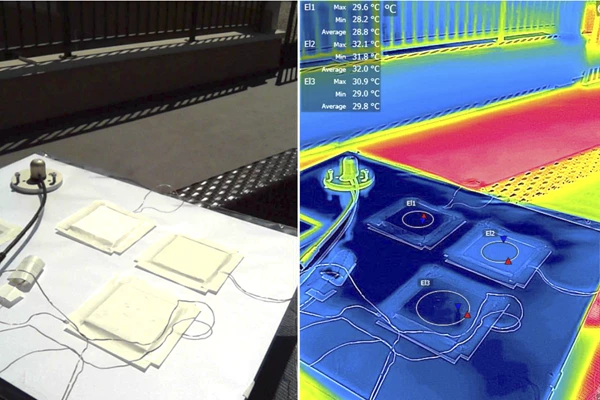Just like a tennis player might don a white shirt instead of a black one on warm summer's day, researchers see great potential in dressing buildings in reflective white paints to keep them cool. A team of material scientists is reporting a major advance in this area, producing a new kind of super white paint that reflects almost all incoming radiation from Sun.
For some time, scientists have been exploring how broad use of white paint could significantly cool buildings, and even the surrounding microclimate. One NASA study from 2012, for example, found that white coatings could reduce peak rooftop temperatures in New York City by an average of 43 °F (24 °C).
While researchers continue to probe the possibilities in this area, with some even producing reflective paint made from glass, the best performing white paints on the market reflect about 85 percent of solar radiation, while absorbing the rest. The team from the University of California, Los Angeles (UCLA) hoped to improve on this by making a few tweaks to the recipe.
The key ingredient in current cooling white paints is titanium oxide, which is very effective at reflecting the majority of visible and near-infrared light. One shortcoming, however, is that it absorbs ultraviolet and violet light at the same time, which leaves some room for improvement.
Through their explorations of alternative materials, the team found success in substituting titanium oxide for an artist’s pigment called barite, along with Teflon, or polytetrafluoroethylene. The scientists also cut down on the number of polymer binders in the paint, which usually serve to absorb heat.

These changes to the recipe resulted in a super white paint with significantly improved cooling capabilities, so much so that it was shown to reflect up to 98 percent of incoming radiation during testing. This kind of material could play a big role in cutting down the cooling costs of buildings, by reducing the use of air conditioners and other systems. And the team says it shouldn’t take too much work to deploy it in real-world scenarios.
“The potential cooling benefits this can yield may be realized in the near future because the modifications we propose are within the capabilities of the paint and coatings industry,” says UCLA postdoctoral scholar Jyotirmoy Mandal.
The research was published in the journal Joule.




